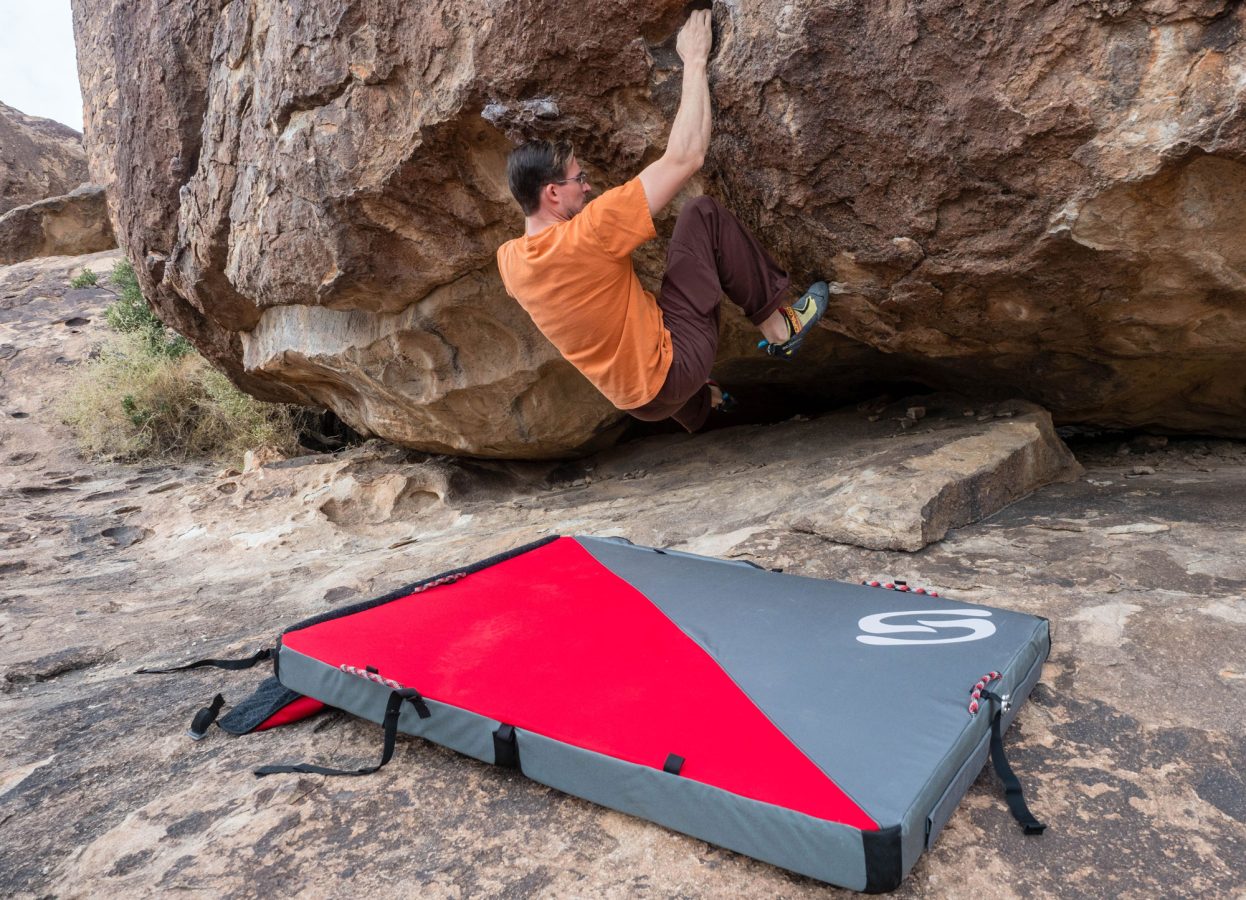crash pads for outdoor bouldering
Bouldering outdoors offers a unique blend of adventure and simplicity. Unlike indoor facilities, where thick foam padding blankets the floor, outdoor bouldering demands a more thoughtful approach to safety. In this article, we’ll explore the art of creating a secure landing when bouldering outdoors. Whether you’re a seasoned climber or just starting, these five tips will ensure you land safely and enjoy your outdoor bouldering experience to the fullest.
1. Look for “Fall Zones”
When bouldering outdoors, the concept of “fall zones” takes on paramount importance. It’s not just about the area at the base of the boulder; it encompasses the entire path a climber might take, from start to finish. This includes considering steep sections and traverses. A generous approach to fall zones is essential, as landing on the edge of a pad is a common cause of ankle injuries. If you find yourself short on pads, consider moving one from the beginning of the climb once the climber is safely past that particular falling zone.
2. Create a Level Landing
Nature is rarely as flat and uniform as an indoor climbing gym. Uneven terrain with rocks or slopes can complicate landings. To address this, use smaller pads to fill in any gaps or depressions (you can fold them if needed) and place a larger pad on top. Test your landing by walking on it to ensure stability and that no area collapses under pressure. Climbers can safely land on a slightly slanted padded area, but steep ground can lead to unwanted sliding if the pad isn’t securely in place or leveled.
3. Avoid Gaps Between Pads
Injuries often occur when climbers fall into gaps between pads. This risk can be minimized with some vigilance. Pads can shift from people walking on them, sitting, or falling, so periodically survey the area and, if necessary, push or kick pads together to eliminate gaps. Some crash pads are designed to attach together with velcro flaps, providing added stability. Carrying smaller “slider” pads can also help cover cracks and gaps, enhancing safety with minimal effort.
4. Stack Pads (Properly) For Higher Boulders
As the height of the boulder increases, so does the impact of a fall. For taller climbs, consider layering two or three crash pads deep. However, be cautious, as adding pads can reduce stability and create deeper gaps. Pay attention to tips 1 to 3 when building up your landing. Having multiple pads often means there are more people, which leads to our final safety tip.
5. Be a Good Spotter
Spotting is a crucial aspect of outdoor bouldering safety. A spotter’s role is not to physically catch a falling climber but to guide them safely onto the crash pad setup. Climbers should not hesitate to ask for a spot when needed. The best spotting practice involves standing with one foot behind the other to maintain balance, positioning hands to secure the climber at the hips, and directing them away from any obstacles in the fall zone. This includes rocks or tree trunks that could pose a risk. Always prioritize protecting the climber’s head in case of an uncontrolled fall.
In some scenarios, especially on low-to-the-ground or vertical climbs, spotting might not be necessary. However, it’s essential to gauge each situation individually.
In conclusion, outdoor bouldering requires a heightened sense of awareness compared to indoor climbing. While indoor facilities provide a cushioned safety net, the outdoors demand vigilance and preparation. By following these five tips, you can significantly enhance your safety and ensure a memorable outdoor bouldering experience. So, this spring, embrace the outdoors, but do it safely!
FAQs
1. Can I use indoor crash pads for outdoor bouldering?
It’s not recommended to use indoor crash pads outdoors. Outdoor conditions are more varied and rugged, requiring specialized outdoor crash pads for safety.
2. Are there any specific brands of crash pads you recommend for outdoor bouldering?
Several reputable brands produce quality outdoor crash pads, such as Black Diamond, Metolius, and Organic Climbing. Research and choose the one that suits your needs and budget.
3. Is spotting always necessary in outdoor bouldering?
Spotting is recommended for most outdoor bouldering situations, but there may be exceptions. Evaluate the climb’s difficulty and potential fall zones to determine if spotting is essential.
4. How do I secure crash pads on uneven terrain?
To secure crash pads on uneven terrain, place smaller pads in depressions and put larger pads on top. Ensure they’re stable by walking on them to test for any wobbling or collapsing.
5. Can I boulder outdoors alone, or is it safer to have a partner?
Bouldering with a partner is generally safer, especially when it comes to spotting and setting up crash pads. It’s advisable to climb with a buddy whenever possible for added safety and assistance.
